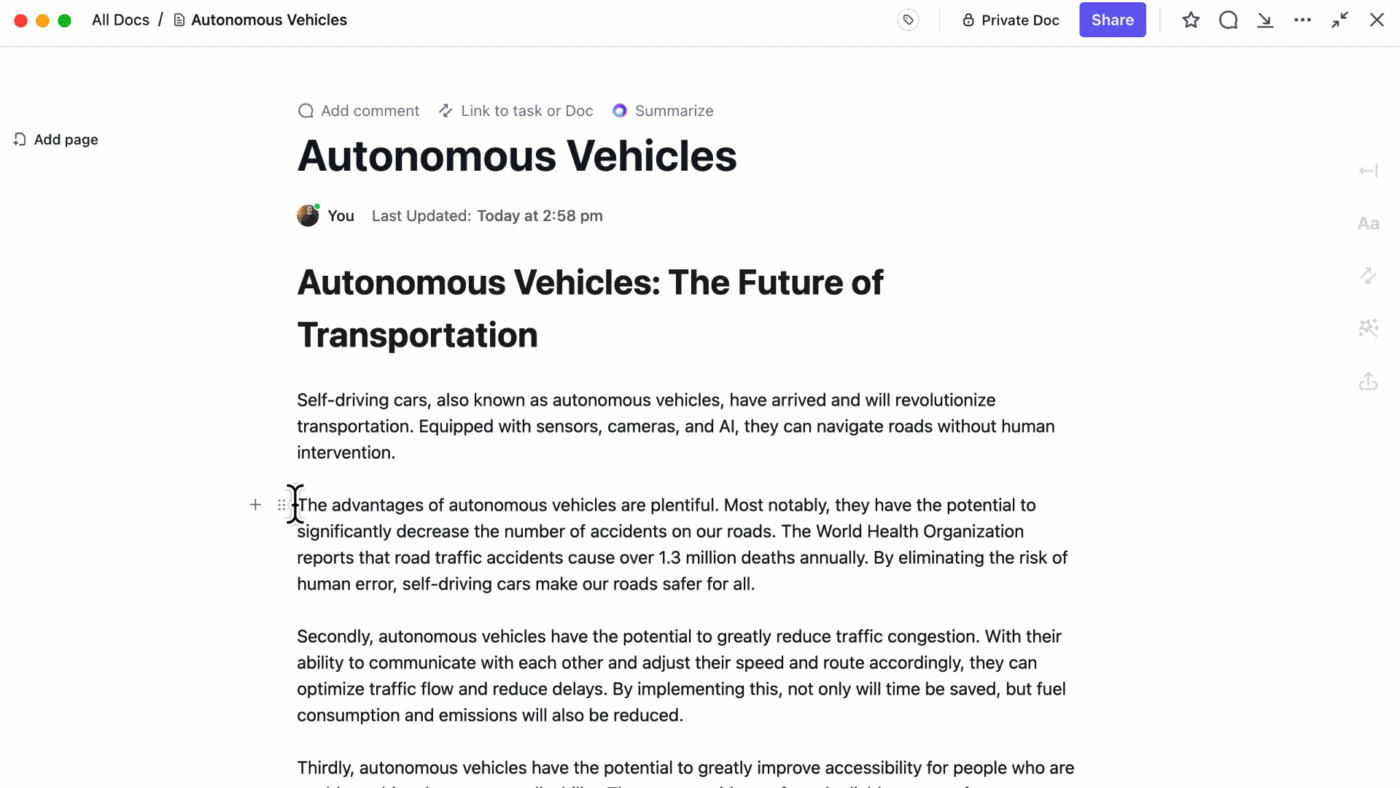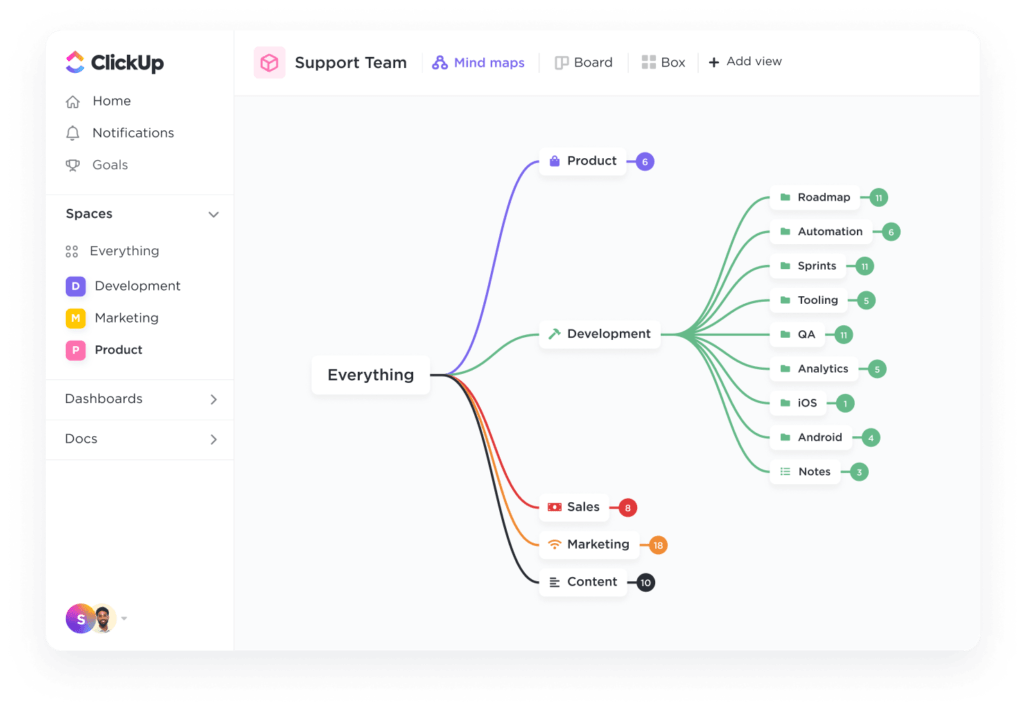How to Run a Content Audit: Essential Steps, Tools, and Templates

Sorry, there were no results found for “”
Sorry, there were no results found for “”
Sorry, there were no results found for “”
As any marketer knows, high-quality content is the key to organic growth. However, it isn’t enough to just create content—you must also ensure that your content contributes to meeting the organization’s goals.
A content audit helps you identify which parts of your content are performing well and which ones need improvement.
Let’s explore this concept a little more to understand what a content audit is, why it is important for your business, and how you can build a detailed process around it.
A website content audit is a comprehensive review of all the content on a website to assess its relevance, consistency, and effectiveness in achieving business goals. A content audit involves:
Regular content audits ensure that content creation aligns with the objectives of your marketing channels and that teams keep content up to date.
Conducting a content audit strategically enhances the effectiveness of your online presence. Here are the top five benefits of performing regular content audits:
Performing a content audit at strategic intervals enhances the effectiveness of your content plan. Here are some ideal times to consider conducting a content audit:
💡 Pro Tip: Create a higher impact through your content audits by augmenting them with a content marketing management plan.
The basic steps to performing a successful content audit are described below, but be sure to adapt the content audit template and process carefully to your business requirements.
Think about the objectives you want your content inventory to achieve: this will help you better plan your content audit.
If your goal is to scale your content operations, the content audit should identify areas where automation speeds up content production without sacrificing quality. You might also assess how well your current content is making use of SEO and social media to maximize reach.
Thus, your content audit goal would be to evaluate the efficiency of content workflows and the effectiveness of your content in engaging audiences at scale.
Once you’ve decided on the goals for your content audit, organize them using ClickUp Goals.
This allows you to easily set your content audit goals, break them down into smaller targets, track their progress, and assign team members various tasks related to each target. ClickUp makes it tremendously easy to manage complex goals and monitor updates on action items.

Once you’ve set the goals, the next step in the content audit is to catalog all the existing content. This involves creating a comprehensive content database of every piece of content your website hosts, including blog posts, website pages, multimedia files, and any downloadable content like PDFs and white papers.
For instance, you might compile a list that includes each blog post with its page title, categorized by topic.
Similarly, organize landing pages by funnel stage, detailing their on-page SEO elements like meta descriptions and header tags.
For multimedia files, categorize them by type and evaluate engagement metrics alongside any associated on-page SEO factors.
Organize your content data in responsive tables with multiple field types in the ClickUp Table view. Link tasks and docs, add attachments, and create Custom Fields to record data such as category, author, traffic, and so on. With simple drag-and-drop organization and options to sort and filter, consolidating your audit data becomes much easier in ClickUp.
Here’s how to efficiently catalog your content assets in a manageable way in ClickUp:
Also Read: The best SEO agency software
The next step is to use website analytics to assess how well your content is performing.
This analysis helps pinpoint which content resonates with your audience and which doesn’t, enabling informed decisions on content optimization or removal.
At ClickUp, we understand how important it is to create content that performs—at scale! Jeremy Galante, who leads SEO at ClickUp, shares how to analyze your content’s performance and what to do next.
Once candidates for optimization are identified, here’s what to do next:
Here’s an expert tip from Jeremy on how to look at content optimization:
An article doesn’t have to be performing badly to be optimized. For example, an article ranking in position 3 or 4 may be generating traffic and conversions, but the upside to moving it into position 1 or 2 is often much greater compared to an article that’s still fighting for a page one position.
💡 Pro Tip: Like the ClickUp team, you can also set up automatic workflows with ClickUp Automations to create optimization tasks for low-performing content.

ClickUp Dashboards offer a powerful way to visualize and analyze content performance metrics. These dashboards allow you to create customized views of your data and monitor your content’s performance across various metrics.
Tailor them to highlight key data points relevant to your content audit, such as traffic trends, engagement rates, and conversion statistics.
This makes it easier to spot trends, identify what’s working, and determine areas that need a boost or overhaul. With ClickUp Dashboards:
💡Pro Tip: Use ClickUp’s Embed view to bring data from multiple sheets and tools into one dashboard!
Incorporate trendspotting techniques to identify emerging topics and areas of interest. This ensures your content not only fills current gaps but also anticipates future trends, setting your brand as a thought leader in your industry.
Also, use competitor analysis tools to see what they’re doing well that you might be missing.
For example, if you’re missing how-to guides on popular topics, and you know all your competitor websites have them, that’s a gap to fill. It could certainly increase engagement and authority.
ClickUp’s Gap Analysis Template transforms the daunting task of identifying content shortcomings into a structured and manageable process. It helps you spot where your strategy needs beefing up and aligns your team on the path to improvement. This template helps you:
Once everything is done, roll up your sleeves and chart a clear path forward. Start by outlining specific steps for updating outdated content, increasing word count, removing redundancies, or creating fresh content.
Here’s how to tackle each area:
Also Read: How to use AI in content marketing
Conducting a thorough content audit requires advanced tools to analyze web pages, collect data on content performance, and uncover SEO opportunities. Here are some essential tools to streamline your content audit process:

This is a must-have for any content marketer. Google Analytics is a free tool that analyzes your entire website and provides insights into your website traffic, user behavior, top ranking pages, and engagement metrics.
Use it to identify your top-performing landing pages, understand where your organic traffic is coming from, and see how users interact with your content.

A powerful tool to support your content marketing strategy, Ahrefs allows you to research your competitors’ website traffic.
It enables users to see what’s working for them, track their top pages, and understand how many backlinks they have.
It’s also great for finding content gaps and keyword opportunities.

This tool is excellent for crawling your website to mimic how search engines view your site. It helps identify SEO issues like broken links, duplicate content, and missing metadata, which are crucial for maintaining a healthy website.
Additionally, incorporating AI tools for keyword research further optimizes your strategy by uncovering valuable keywords that drive more traffic and enhance content relevance.
ClickUp for Marketing Teams is a versatile project management platform and a powerhouse for content teams. It excels in content creation, analysis, and management and helps streamline the entire content lifecycle, from brainstorming ideas and drafting articles to publishing and post-publication analysis.
The platform supports various content types, enabling seamless collaboration among writers, editors, and marketers.
ClickUp also offers multiple templates (for example, content writing templates or content marketing strategy templates) to streamline the planning and execution of your content efforts.
Let’s look at some more of ClickUp’s prominent features in addition to the ones we highlighted earlier.

ClickUp Docs streamlines your content creation process, making it easy to draft, edit, and collaborate all in one place. Whether you’re crafting blog posts, detailed reports, or internal wikis, ClickUp Docs adapts to your needs with rich formatting options and real-time collaboration features.
Seamlessly integrate your documents with tasks and workflows, ensuring that your content moves smoothly from conception to publication.
With ClickUp Docs:

ClickUp Brain is your go-to AI powerhouse, enhancing how you manage content creation and audits. This tool doesn’t just help you write; it connects all your company’s knowledge—tasks, docs, and communications—into one intelligent network.
With ClickUp Brain:

ClickUp Whiteboards transform your team’s brainstorming sessions into actionable strategies, all within a dynamic and collaborative virtual space. Draw, jot down notes, and visually connect thoughts to actual tasks and projects, ensuring no idea gets left behind.
With ClickUp Whiteboards:

ClickUp Mind Maps offer a dynamic way to visually organize and develop your thoughts, breaking complex ideas into manageable segments.
These mind maps help you draw connections between concepts, plan out detailed projects, and transform abstract ideas into actionable tasks.
With ClickUp Mind Maps:
The ClickUp Content Management Template is an effective tool designed to streamline every phase of your content strategy. It is perfect for managing content across various channels such as blogs, social media, websites, and email marketing.
It ensures all stakeholders are on the same page by providing a structured workflow for content requests, creation, scheduling, and delivery.
With the ClickUp Content Management Template:
ClickUp’s Content Marketing Editorial Calendar Template is designed to support your content strategy by organizing all your digital content efforts under one roof.
This template is ideal for teams looking to maintain a consistent and active communication stream across multiple channels. It simplifies the complex tasks of planning, scheduling, and executing content, ensuring that every piece is crafted, reviewed, and published on time.
With the ClickUp Content Marketing Editorial Calendar Template:
You can also rely on the ClickUp Content Marketing Plan Template as a strategic tool for systematically outlining and executing content marketing initiatives.
Conducting a content audit is essential for refining your digital strategy. It ensures that your content aligns with your business goals and effectively engages your audience.
It also helps you weed out the non-performing assets from your online channels and work with only the high-performing ones.
Regular content audits improve the quality and performance of your content and help identify new opportunities for growth. Timely content audits can also help keep your content dynamic and aligned with your audience’s needs.
Start your content audit today and watch your engagement metrics soar!
ClickUp’s user-friendly tools and templates are ideal for structuring your content audit workflows for an efficient and productive audit process. Sign up to ClickUp for free to explore more.
© 2026 ClickUp